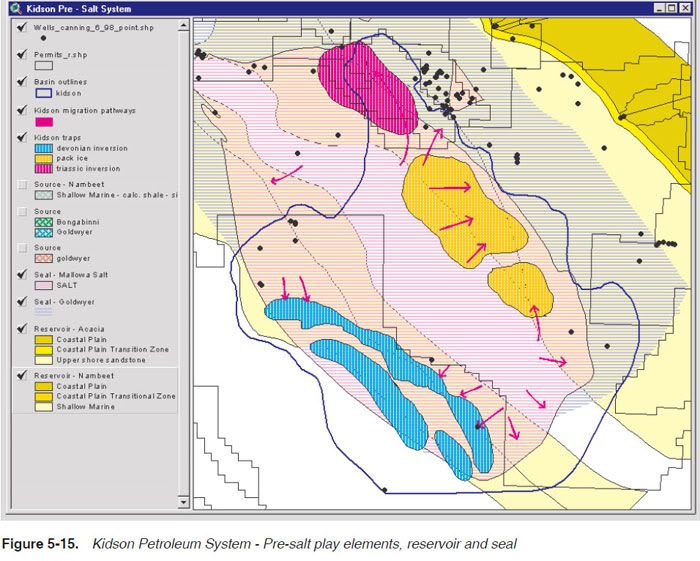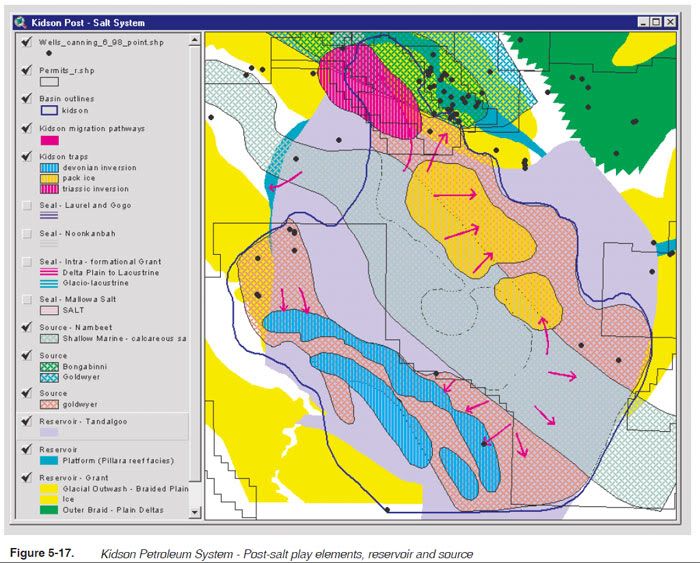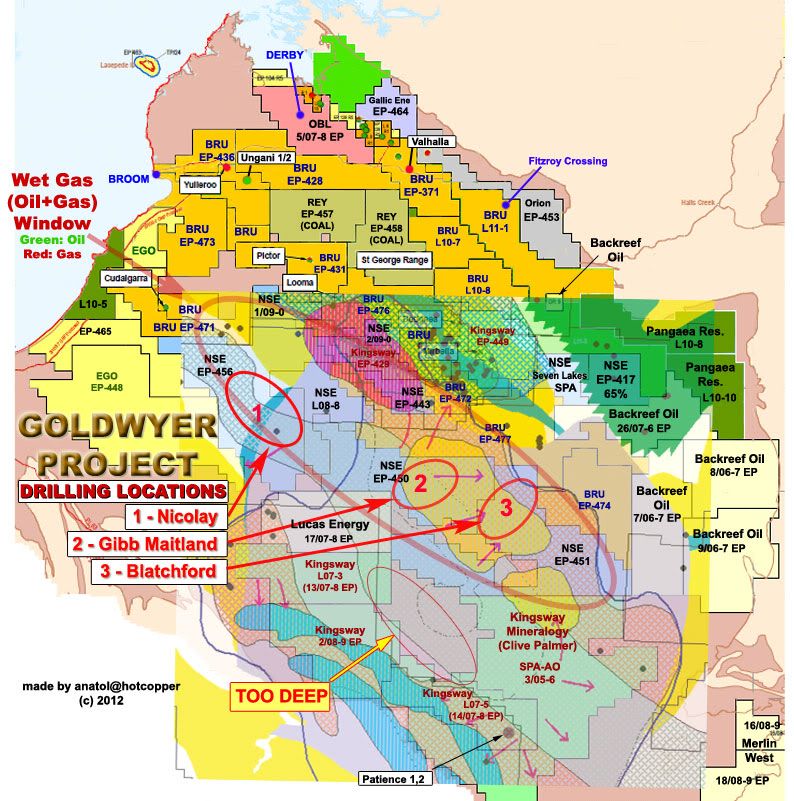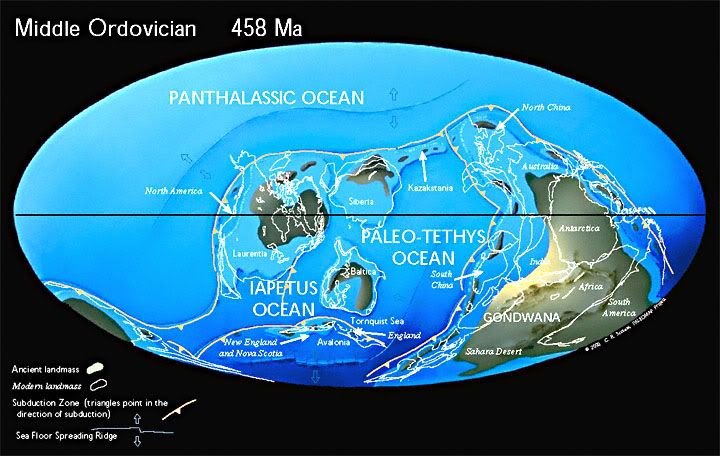GIBB MAITLAND AND BLATCHFORD LOCATIONS:
- Late Ordovician Glaciogenic Reservoir Plays
- Potential to be giant oil & gas fields
They will be both drilled on the Crossland Platform on north of Kidson sub-basin. They will not be drilled on to the edges of valleys like Nicolay Location or BRU”s Ungani!
These plays might be the GLACIALLY INFLUENCED PETROLEUM PLAYS (or called Late Ordovician Glaciogenic Reservoir Plays)
I have found out that the area where NSE’s Gibb Maitland and Blatchford Locations will be drilled, is on Crosland Platform at north of Kidson sub-basin where very large ice packs stayed there millions of years during and after the Late Ordovician glaciation. Therefore it could have glaciogenic reservoir plays. These plays might end up by finding major O&G resources.
It is said on page 60 of SRK Consulting Report “Canning Basin project 1998” (which is made for Shell) ; “While the onset of glaciation is difficult to assess from sediments in the Fitzroy Trough, age-equivalent facies in the Willara and Kidson Sub-basin are clearly of a glaciogenic origin”. Source: Click here
PACK ICE - GLACIAL TRAPS IN PRE-SALT SYTEM AND POST SALT SYSTEM
Now this is from above SRK report, showing the PRE-SALT PETROLEUM SYSTEM. You can see aesily that there are two huge chunks of Pack Ice on Crossland Platform. They will stay there on the post salt system too, for millions of years. O&G should be trying to migrate from there or TRAPPED there due to the geological conditions.
The TRAP TYPES are shown here are being;
- Devoinian Inversions
- Pack Ice
- Triassic Inversions
PS: Pre-salt systems means the petroleum system in the formations below the main salt layer which Carribuddy salt layer or mainly Mallowa salt formation.
Now this is the Post-Salt petroleum system, and you can see the Pack Ice chunks are still there in Silurian and Devionian Eras.
And you can see here that those Glacial Pack Ice structures have been on top of the formations where Gibb Maitland and Blatchford Locations will be drilled.
Again; The TRAP TYPES are shown here are being;
- Devoinian Inversions
- Pack Ice
- Triassic Inversions
In North Africa, Late Ordovician glaciogenic reservoirs contain large volume of recoverable hydrocarbon reserves.
"The petroliferous Murzuq Basin occupies some 350,000 km2 of western Libya and northern Niger (Fig. 1A), and Upper Ordovician (Hirnantian) glacial deposits are the main reservoir targets within this basin. These rocks form part of a Lower Palaeozoic petroleum system that is sourced and sealed by lower Silurian ‘‘hot’’ shale. Until the early 1980s, hydrocarbon systems were unproven within this basin, and exploration was neglected. Approximately 57 wells were drilled between 1958 and 1997 and almost all intended to test Ordovician prospects with four resulting in large discoveries (including the Elephant and El Shahara fields holding 1–1.5 billion barrels of recoverable liquid reserves) as well as 16 smaller discoveries and 12 wells with shows.” Source: Click here
Giant and super-giant oil and gas fields with Palaeozoic source and reservoir that are similar to Canning Basin
You can see on this important document “Canning Basin and Global Palaeozoic Petroleum Systems – A Review” by Department of Industry Resources WA, it was said “there were more than 131 giant and super-giant oil and gas fields with Palaeozoic source and reservoir that are similar to Canning Basin”. And the above Murzuq basin was given as an example. However it was not mentioned on this document that the main similarity should be coming from being Late Ordovician Glaciogenic Reservoirs. Source: Click here
Similar age glacial (Australian) deposits with Canning; capacity to entrap oil and gas was proven by the Turtle and Barnett wells
Also, this was said by tone of our Australian experts, J.D. Gorter; “Glacial deposits within the Lower Kulshill Group (Late Carboniferous-Early Permian) were initially recognised in cores from onshore wells in the southeastern Bonaparte Basin in the 1960s… Their capacity to entrap oil and gas was proven by the Turtle and Barnett wells, located on the offshore Turtle High. Similar age glaciogene rocks occur within the Cooper Basin of central Australia, where they contain oil and gas reserves, and in the Canning, Carnarvon and Perth basins of Western Australia.” Source: Click here
Great potential for future production in Canning
Here is another multi-national document, look what it says;
(AAPG Search and Discovery Article, AAPG International Convention and Exhibition, September 12-15, 2010 Calgary, Alberta, Canada)
“The late Paleozoic ice age (LPIA) was the longest-lived phase of icehouse climate in the Earth’s Phanerozoic history, when most of the Gondwanan landmass was glaciated at some point in time between the Late Devonian and Mid Permian. Late Paleozoic glaciogenic sedimentary sequences contain prolific hydrocarbon reserves in Oman and Saudi Arabia and have great potential for future production in a number of other basins, including the Parana Basin of Brazil and Canning and Bonaparte Basins of Western Australia.” Source: Click here
Locations of countries with prolific Palaeozoic petroleum systems
Here is the map of “Locations of countries with prolific Palaeozoic petroleum systems” from “Canning Basin and Global Palaeozoic Petroleum Systems – A Review” document.
The exploration of these systems in worldwide is considered extremely challenging as glaciogenic sedimentary environments are complex and still poorly understood compared to most other sedimentary environments. However when something is found it could being BIG, VERY BIG. It could even be Billions of barrels of oil (or equivalent of oil). Moreover, Kidson sub-basin is not that complex because it was not affected by the tectonic movements as it was at the middle of Canning Basin. (I have checked this with other reports). It is relatively a simple basin but not drilled down to the bottom at all so far.
The exploration of these systems in worldwide is considered extremely challenging as glaciogenic sedimentary environments are complex and still poorly understood compared to most other sedimentary environments. However when something is found it could being BIG, VERY BIG. It could even be Billions of barrels of oil (or equivalent of oil). Moreover, Kidson sub-basin is not that complex because it was not affected by the tectonic movements as it was at the middle of Canning Basin. (I have checked this with other reports). It is relatively a simple basin but not drilled down to the bottom at all so far.
We just need to drill and see what happens then.
The Ordovician, the second of six of the Paleozoic Era
“The Ordovician is a geologic period and system, the second of six of the Paleozoic Era, and covers the time between 488 to 443 million years ago. It follows the Cambrian Period and is followed by the Silurian Period. The Ordovician, named after the Celtic tribe of the Ordovices.”
“The Ordovician saw the highest sea levels of the Paleozoic, and the low relief of the continents led to many shelf deposits being formed under hundreds of metres of water. Sea level rose more or less continuously throughout the Early Ordovician, levelling off somewhat during the middle of the period. Locally, some regressions occurred, but sea level rise continued in the beginning of the Late Ordovician. A change was soon on the cards, however, and sea levels fell steadily in accord with the cooling temperatures for the ~30 million years leading up to the Late Ordovician (Hirnantian) glaciation.”
The Ordovician was a time of calcite sea geochemistry in which low-magnesium calcite was the primary inorganic marine precipitate of calcium carbonate. Carbonate hardgrounds were thus very common, along with calcitic ooids, calcitic cements, and invertebrate faunas with dominantly calcitic skeletons.
For most of the Late Ordovician, life continued to flourish, but at and near the end of the period there were mass-extinction events that seriously affected planktonic forms like conodonts, graptolites, and some groups of trilobites. The Ordovician–Silurian Extinction Events may have been caused by an ice age that occurred at the end of the Ordovician period as the end of the Late Ordovician was one of the coldest times in the last 600 million years of earth history.
If you want to see more information about Ordovician: Source: Click here
The world in ordovician Era
You can find Australia at the upper left side of Antarctica.
Add to My Watchlist
What is My Watchlist?










